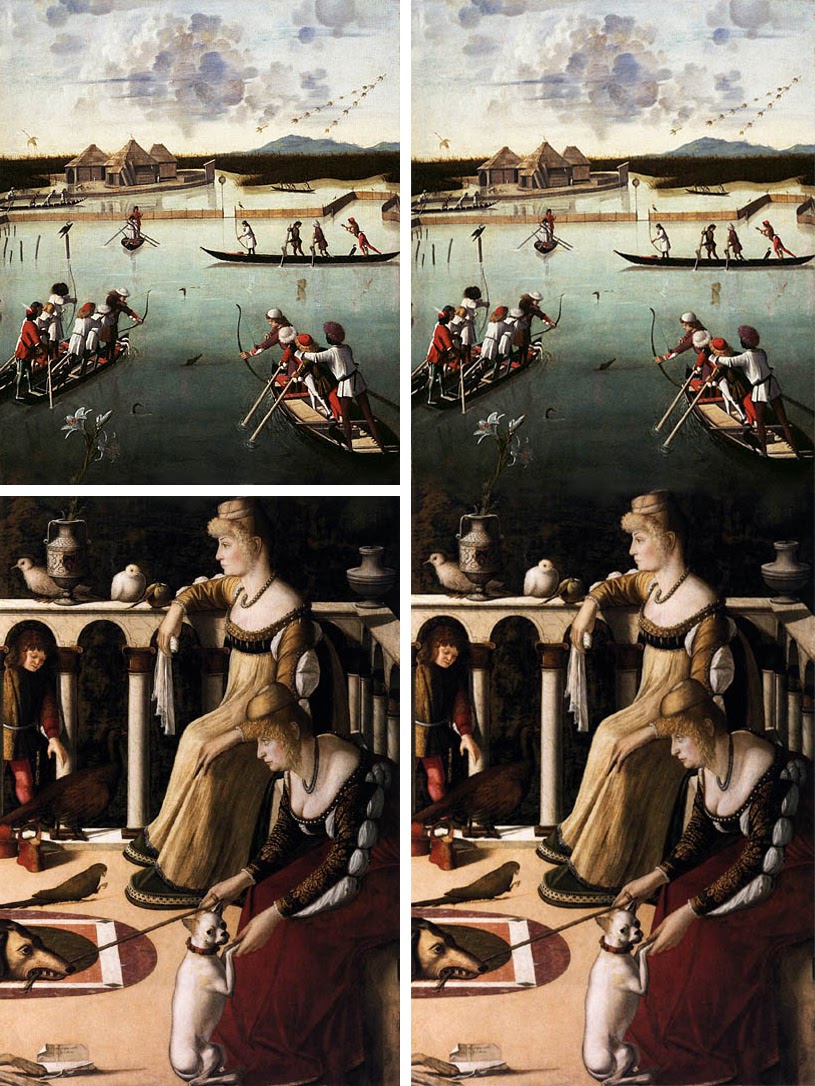
Carpaccio’s incredible Duck hunters reunited with the lower half of the canvas – Two Nobile Ladies awaiting their husbands.
Vittore Carpaccio was born on the island of Mazzorbo in the Venetian Lagoon. The exact year of his birth is unknown although it is estimated to be in the 1460s. Contemporary with the Bellini brothers Giovanni and Gentile he was instrumental in defining the iconography of the Venetian Republic. His painting of the ‘Winged Lion’ of St Mark’s hangs in the Palazzo Ducale (Doge’s Palace) and symbolises the strength and importance of the Venetian Republic.
His painting of the slaying of the dragon by San Giorgio which hangs in the Scuola San Giorgio, just inland from Riva Schiavoni is one of the most powerful versions of this classical subject that I know. Debris from a recent battle can be seen; skulls, bones, dismembered bodies litter the foreground. Whilst chivalrous and brave George, with his Titian red hair (beloved by Venetians) bravely puts paid to the dragon. The background is a pastiche of castles and temples, reminiscent of the Holy Land. George is definitely in Crusader mode with his armour, sword and spear. A beautiful princess looks on, wishing him success in battle.
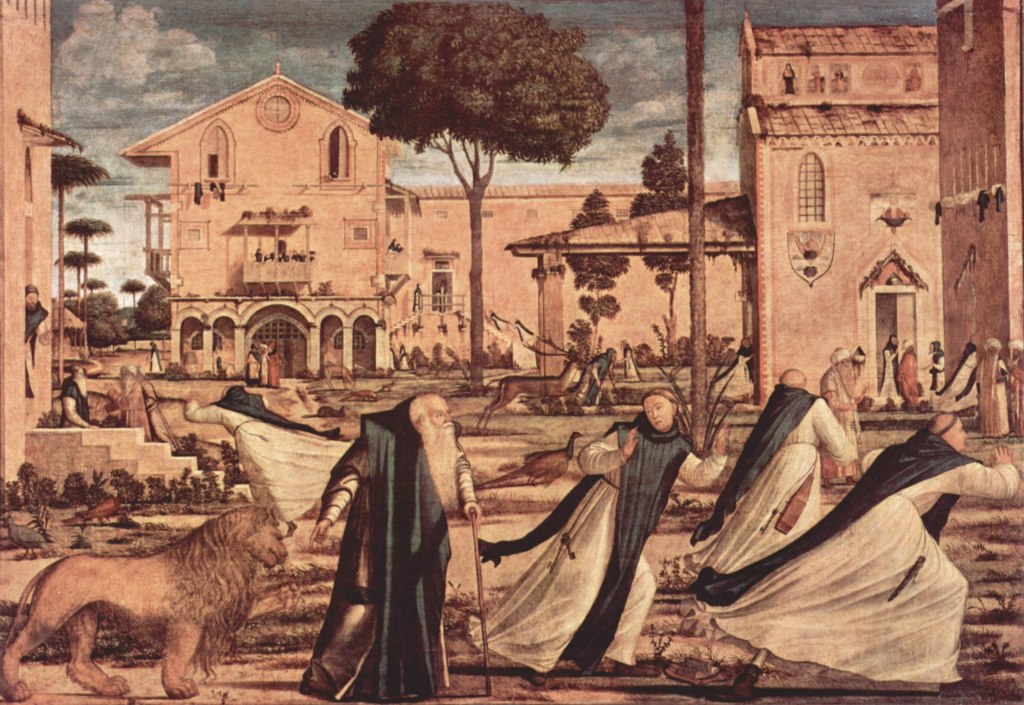
St Jerome was a 4th century saint and scholar. He was responsible for translating the Bible into Latin. Legend has it that he preferred wild animals and beasts to people. He befriended and tamed this lion and removed a thorn from its paw. The lion was a symbol of power and strength to the Venetians who had adopted St Mark as a suitable patron saint of the city as the Republic grew and prospered. The previous patron saint of Venice was Theodore – he was deemed insufficiently prestigious. An evangelist was needed for a city as dynamic and powerful as Venice. No doubt the Venetians also liked the idea of scholarly St Jerome, usually portrayed with a long flowing beard as a man of wisdom and great intelligence. Interestingly St Jerome is known as Hieronymous in Latin – a fact I learned just today!
Carpaccio clearly felt comfortable with saintly material. Another of his exceptional canvases is the ‘Vision of St Augustine’ a wonderful representation of yet another saint sitting in his study and being inspired by the presence of God. The detail of the room in which the saint works, furniture, ornaments and manuscripts enriches the experience of the viewer and the mind of the saint. St Augustine (of Hippo) was a scholar and philosopher, he was regarded as one of the most important thinkers in the early Christian church. A man of books and learning and philosophy.
It’s not all serious swotting with Carpaccio though, in both the St Augustine painting and another canvas in the Accademia – Relics of the Holy Cross at Rialto – there’s a cute furry white dog in the middle of the picture. This adds a little humanity and every day normality to these otherwise stylised and highly studious paintings. Even the fleeing monks in the painting of St Jerome indicate some humour in Carpaccio’s work. So too does the range of athletic figures of the gondoliers in the ‘Relics of the Cross at Rialto’ canvas. So next time you are in Venice, head to either Scuola San Giorgio degli Schiavoni to admire the Carpaccio paintings there or head to Accademia for a different but equally interesting set of Carpaccio canvases.
Notes:
- A new exhibition of Carpaccio paintings and drawings opened at Palazzo Ducale, Venezia on 18th March, 2023 – it runs until June, 2023.
- https://palazzoducale.visitmuve.it/en/mostre-en/mostre-in-corso-en/vittore-carpaccio-paintings-and-drawings/2023/02/22819/carpaccio-2023/
- There are several fantastic works by Carpaccio in the exhibition. Below you can see The Duck Hunters on the Lagoon (usually in the Getty, California). On the right is ‘The Birth of the Virgin’ part of the Scuola degli Albanesi Cycle now dispersed across various galleries in Northern Italy. Both paintings are rich in symbolism and detail.


However, many of the paintings would be so much richer seen in the appropriate context – scholars have now realised that the ‘Cortigiane’ in the painting below is actually the bottom half of the ‘Duck Hunter’ painting above. This information actually gives some humour to the overall piece. As the slightly disgruntled ladies await the return of their husbands. They while away the time with various pet animals including a parrot, pheasant, cute little chihuahua dog and a large (slightly more intimidating) hunter-type dog. Not to mention a page boy available to deliver food and drinks as required.
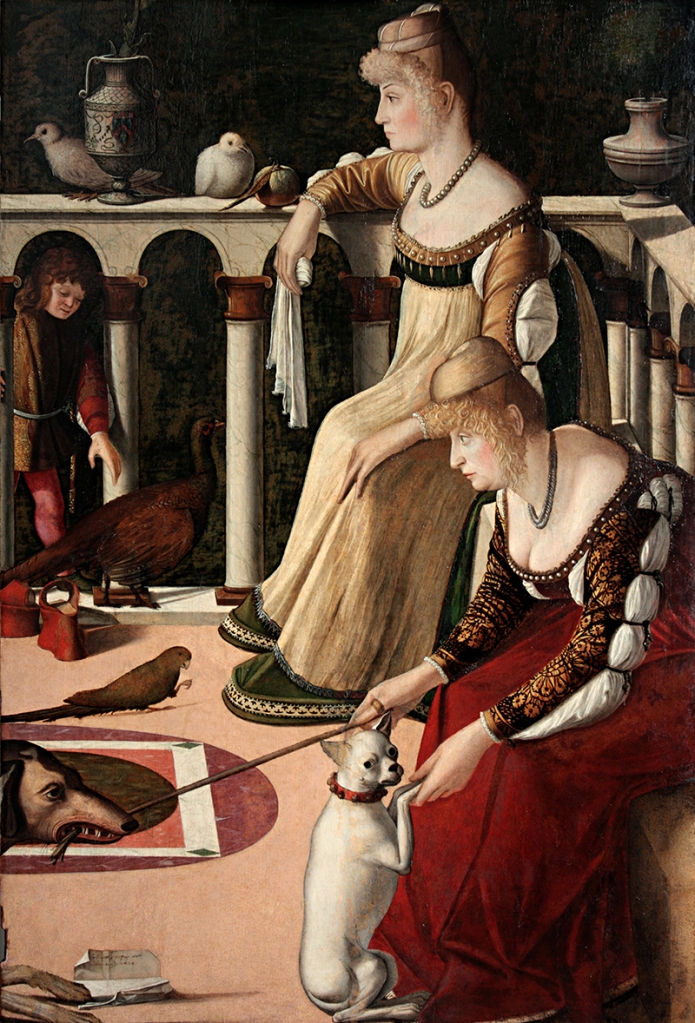
- Unfortunately many of the paintings that we know and love of Carpaccio remain firmly in their traditional resting places. The Scuola San Giorgio being one, where you can see St George slaying the dragon and also the fabulous St Augustine in his study. Similarly ‘The Miracle of the Cross at Rialto’ and the fabulous Ararat remain firmly in the Accademia (Venice).
- If you are in Venice between now and June definitely go and see the Carpaccio show at The Palazzo Ducale, but don’t expect miracles. For miracles you’ll still need to go to The Accademia and Scuola San Giorgio.
- The Saints – Much of what we know about the early Christian saints and their so called hagiography (history of the saints) was written in medieval times by Jacopo de Varagine in the 1260s. He wrote a book called ‘The Golden Legend’ (Legenda Aurea) outlining the stories and histories of these saints. The book was a best-seller of its day. Over 1000 manuscripts still exist (which is incredible).
- I’ve written about various saints including:
- The legend of St Lucy – Santa Lucia in Italy – 13th December is her Feast Day
- Saints and Angels in Venice…(featuring Tobias and the Angel)
- St Catherine of Alexandria
- Festa di S. Martino – Venezia (possibly my favourite because he gave a poor man his coat)
- Sant’ Apollinare in Classe (first Bishop of Ravenna)
- I’ve also written about art in Venice especially Venice – Accademia Art Gallery and numerous other articles
- Venice – there’s treasure in every church
The thing about Venice is that there is treasure around every corner and once you start looking, you can’t help but be overwhelmed by the richness of this medieval city which still looks (more or less) as it did in 1510.
14th Sept, 2021 / Updated: April, 2023
The recently restored ‘Lion of San Marco’ takes pride of place in the exhibition.
April 2023
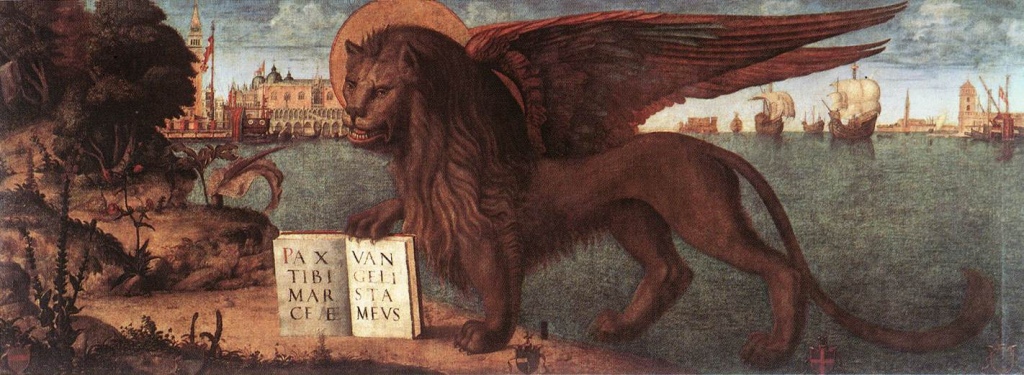
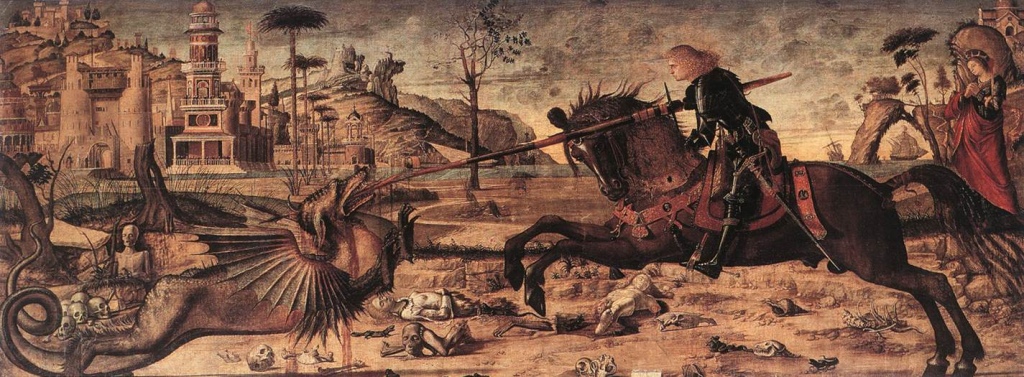
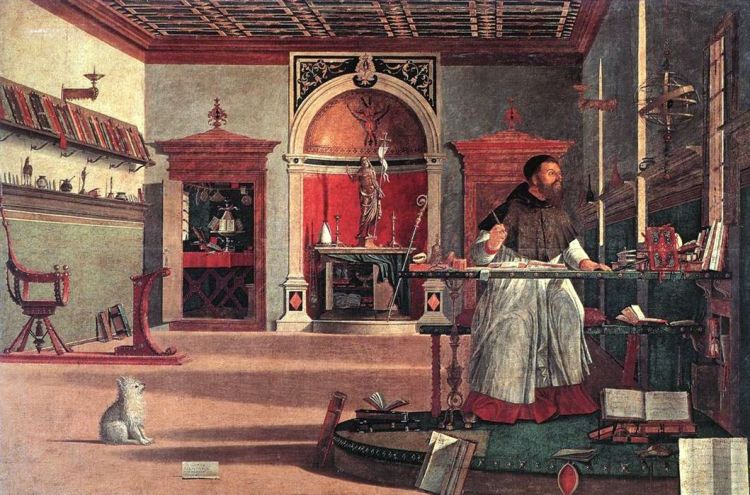



Oh my goodness! Such details in his paintings! I love your stories and adventures you take us on, Janet–thank you!
LikeLiked by 1 person